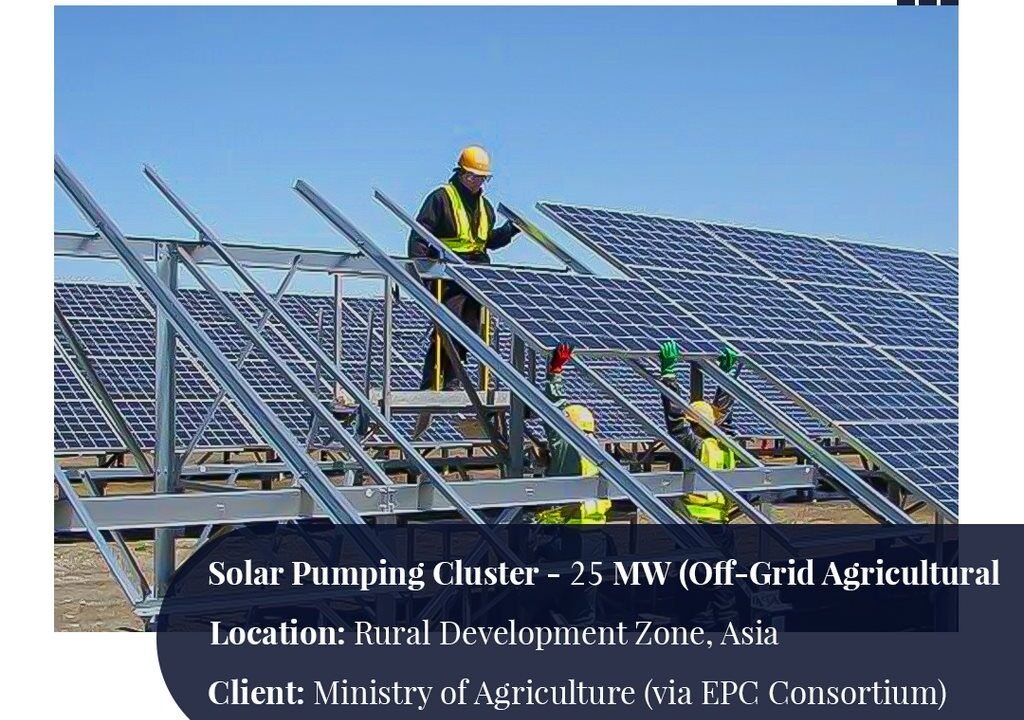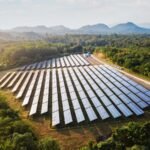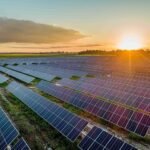Agro-PV Smart Farm Project (5 MW) Report
Project Overview
Steelbridge Export has successfully completed a pioneering 5 MW Agro-PV project in Western Asia, integrating solar energy generation with precision agriculture. This innovative Agro-PV system combines solar panels with agricultural operations, creating a dual-use land design that optimizes land resources for both energy generation and crop production. The project was executed for a Private Agricultural Investment Group and is now fully commissioned, offering a sustainable solution for farming and energy needs.
Project Details
- Location: Western Asia
- Status: Commissioned
- Client: Private Agricultural Investment Group
- Role: EPC Contractor
- Key Dates:
- Contract Signing: 2 February 2025
- Site Mobilization and Land Grading: 9 February 2025
- Mounting Structure Installation: 16 February 2025
- Solar Panel Installation: 2 March 2025
- Testing and Commissioning: 1 April 2025
- Commissioned: 11 April 2025
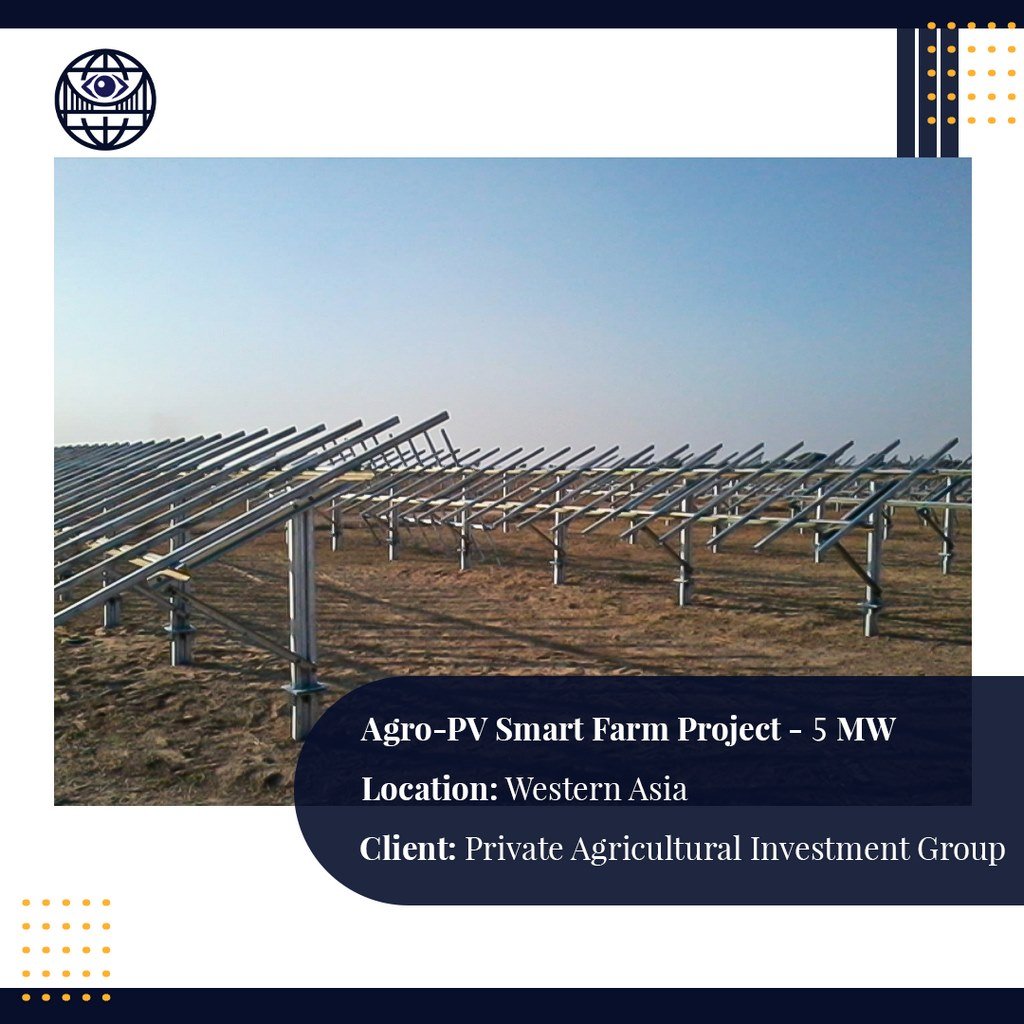
Project Scope and Objectives
The Agro-PV Smart Farm project combines solar energy generation with precision agriculture, allowing the land to serve dual purposes: energy production and crop cultivation. The primary goals of the project include:
- Optimizing land use by combining agricultural production and solar power generation.
- Enhancing crop yields by using the shade from the solar panels to reduce water evaporation and protect plants from extreme weather conditions.
- Providing sustainable energy for farm operations, water pumps, and storage facilities.
- Using advanced technology for real-time microclimate monitoring, optimizing agricultural conditions, and improving overall farm productivity.
System Design and Features
- 5 MW Solar Photovoltaic (PV) System:
- The core of the project is a 5 MW PV system, designed to provide renewable energy to support farm operations and reduce reliance on conventional energy sources.
- The PV system features high-efficiency solar panels and a customized mounting structure that allows the panels to tilt throughout the agricultural cycle, optimizing energy production and minimizing land use.
- Dual-Use Land Design:
- The project is designed with elevated structures for the solar panels, which creates space for crops to grow underneath. This allows for dual land use, where the area beneath the solar panels can be used for agricultural production.
- Shade-Tolerant Crops: The design also includes growing shade-tolerant crops under the panels, optimizing crop yields in conditions that would typically be challenging due to extreme heat or water scarcity.
- Integration with Irrigation System:
- The project features an integrated irrigation system, which helps in efficient water management for the crops. Solar energy generated by the PV system powers the irrigation and water pump systems, ensuring that energy costs are minimized while maintaining effective farm operations.
- Real-Time IoT-Based Microclimate Monitoring:
- To optimize agricultural production, the system includes IoT-based sensors that continuously monitor microclimate conditions such as temperature, humidity, and soil moisture.
- The data from these sensors helps the farm managers adjust agricultural practices in real-time, ensuring that the crops receive optimal care based on the current environmental conditions.
- Custom-Designed Mounts for Panel Tilt Adjustment:
- Custom mounting structures were designed for the solar panels, allowing for tilt adjustments throughout the agricultural cycle. This adaptability ensures that the panels can be adjusted to maximize solar energy capture at different times of the year, while also maintaining the ideal conditions for crops underneath.
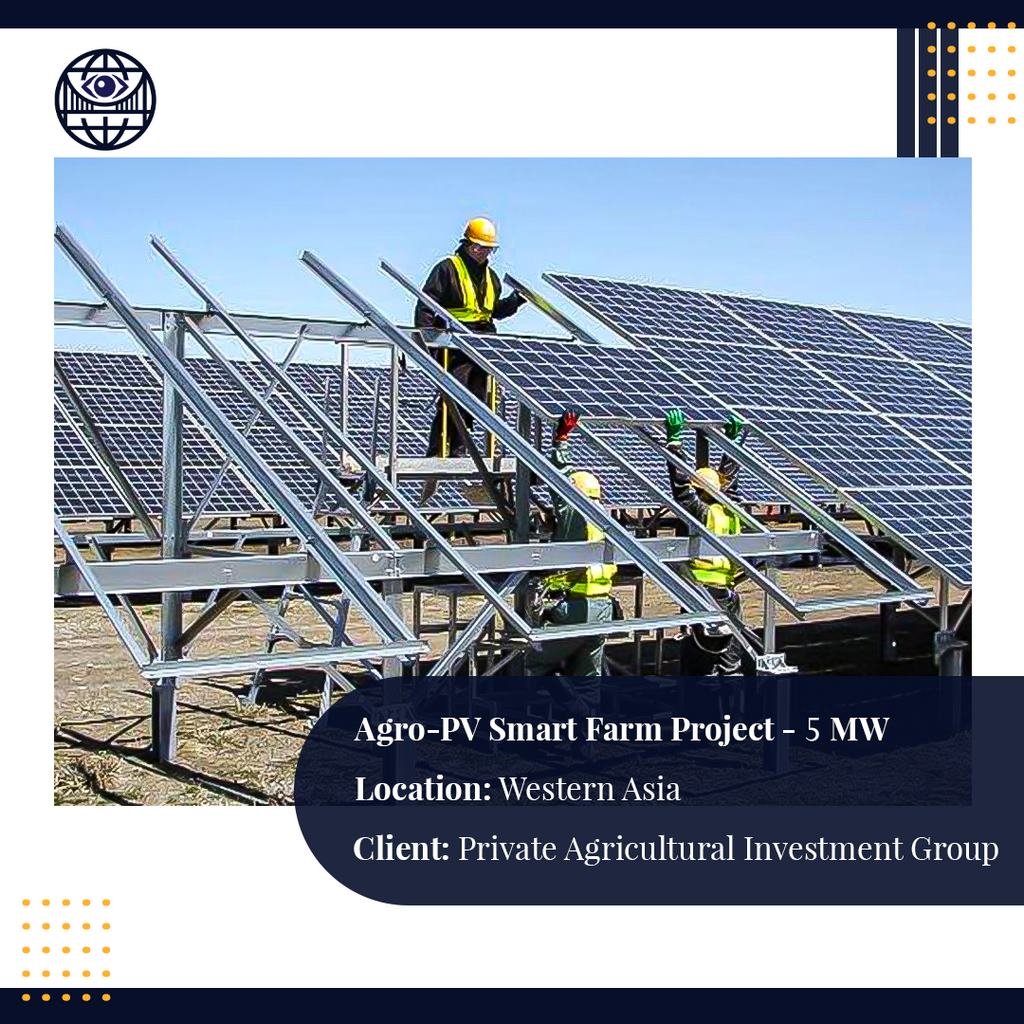
Project Phases and Timeline
- Contract Signing and Initial Planning:
- The contract was signed on 2 February 2025, marking the official commencement of the project. Detailed planning for the dual-use land design, system installation, and integration of solar energy and agriculture began immediately.
- Site Mobilization and Land Grading:
- On 9 February 2025, the site was mobilized, and the land grading process began. Proper land leveling and preparation were essential to accommodate the elevated solar panel structures and ensure the integration of the irrigation system.
- Mounting Structure and Solar Panel Installation:
- By 16 February 2025, the mounting structures for the solar panels were installed. The solar panel installation was completed by 2 March 2025, and the system was set up to be fully integrated with the irrigation and agricultural systems.
- Testing and Commissioning:
- After installation, the system underwent thorough testing and commissioning. On 1 April 2025, all systems were tested to ensure functionality, and on 11 April 2025, the project was successfully commissioned, with full operational capacity.
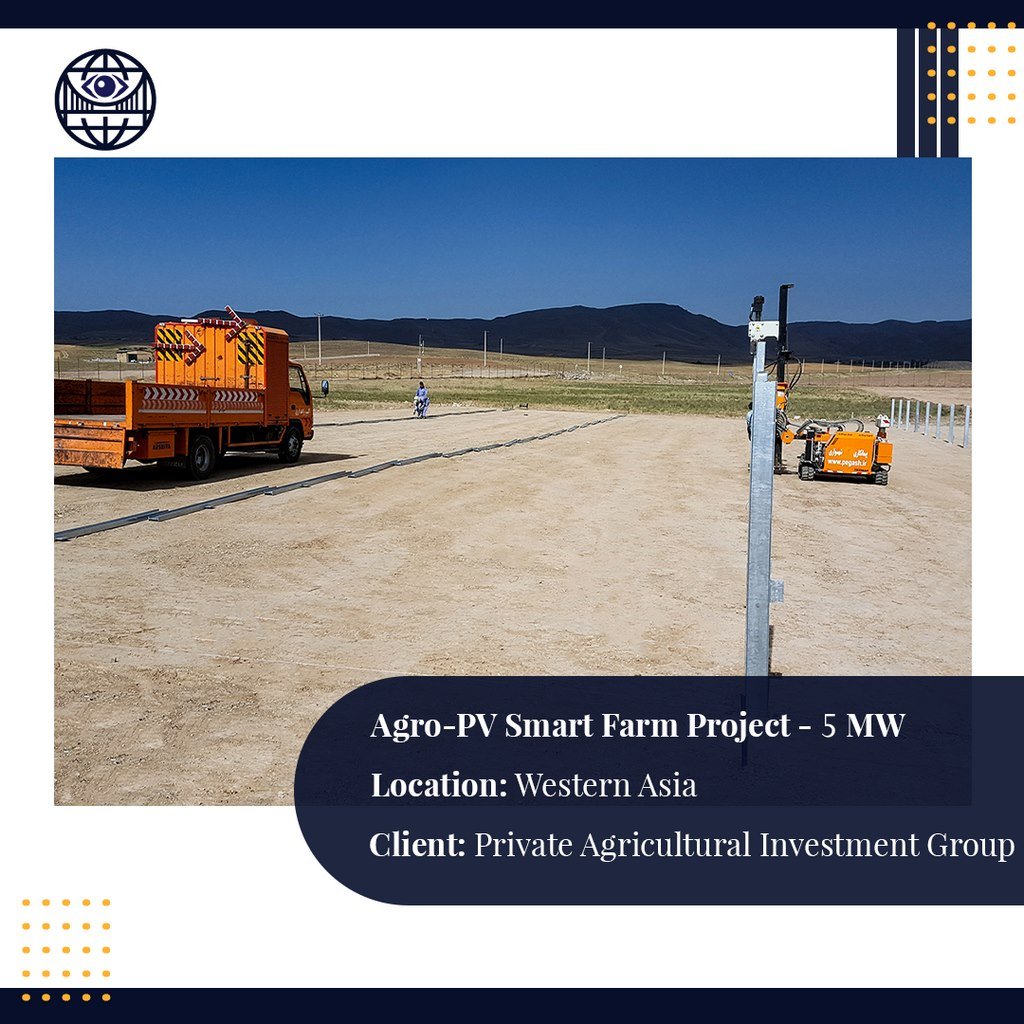
Performance and Results
- Energy Production and Crop Yield: The 5 MW solar system now provides renewable energy for the farm, significantly reducing energy costs for operations such as irrigation, water pumps, and storage. The shading effect from the solar panels has been shown to improve water conservation and enhance crop resilience to heat stress.
- Sustainability: This project is a perfect example of sustainable farming practices, integrating renewable energy with agriculture. By reducing energy consumption and increasing crop yields, the Agro-PV Smart Farm is contributing to both environmental and economic sustainability.
- Technological Advancements: The use of IoT-based microclimate monitoring and real-time data analysis has allowed for continuous optimization of farm management, resulting in better crop yields and more efficient use of water and energy resources.
Future Prospects
The successful implementation of the Agro-PV Smart Farm in Western Asia has laid the foundation for future projects that combine solar energy with agricultural development. Given the growing global demand for both sustainable energy and food production, this Agro-PV model presents a scalable solution for farmers in arid and semi-arid regions, where land is limited and water resources are scarce.
Steelbridge Export’s EPC contractor expertise ensures that the project is not only technically efficient but also financially viable, making it an attractive solution for agricultural investors seeking to reduce energy costs while improving crop productivity.
This report outlines the key achievements and innovations of the 5 MW Agro-PV Smart Farm Project, underscoring Steelbridge Export’s role as an EPC contractor and system integrator in delivering a highly efficient, sustainable, and technologically advanced solution for both energy generation and agricultural productivity.
For more information about Steelbridge export’s Other Projects click here.
FAQ
- 1. What is an Agro-PV Smart Farm and how does it differ from traditional solar farms?
An Agro-PV Smart Farm integrates solar photovoltaic systems with agricultural activities by installing elevated solar panels that allow crops to grow beneath. Unlike traditional solar farms that solely focus on energy production, Agro-PV systems optimize land use by simultaneously generating renewable energy and supporting crop cultivation, enhancing sustainability and economic returns. - 2. How does the solar panel shading benefit crop production?
The shading from elevated solar panels reduces direct sunlight exposure, which lowers water evaporation and protects crops from extreme heat. This microclimate moderation improves soil moisture retention and enhances crop resilience, especially in arid and semi-arid regions, leading to increased agricultural yields. - 3. What technologies are used to monitor and optimize farm conditions in this project?
The project employs IoT-based microclimate sensors that continuously track temperature, humidity, and soil moisture. This real-time data enables farm managers to make informed decisions regarding irrigation and crop management, optimizing resource use and improving overall productivity. - 4. How does the Agro-PV system contribute to energy cost savings on the farm?
The 5 MW solar PV system provides renewable electricity that powers irrigation pumps, water storage, and other farm operations. By reducing reliance on grid electricity or fossil fuels, the system significantly lowers energy costs and carbon emissions for the agricultural enterprise. - 5. Is the Agro-PV Smart Farm model scalable for other regions and farm sizes?
Yes. The modular design and flexible mounting systems allow the Agro-PV concept to be adapted for various geographic regions, climate conditions, and farm sizes. It is particularly well-suited for arid and semi-arid areas where land and water resources are limited but solar irradiance is high.



